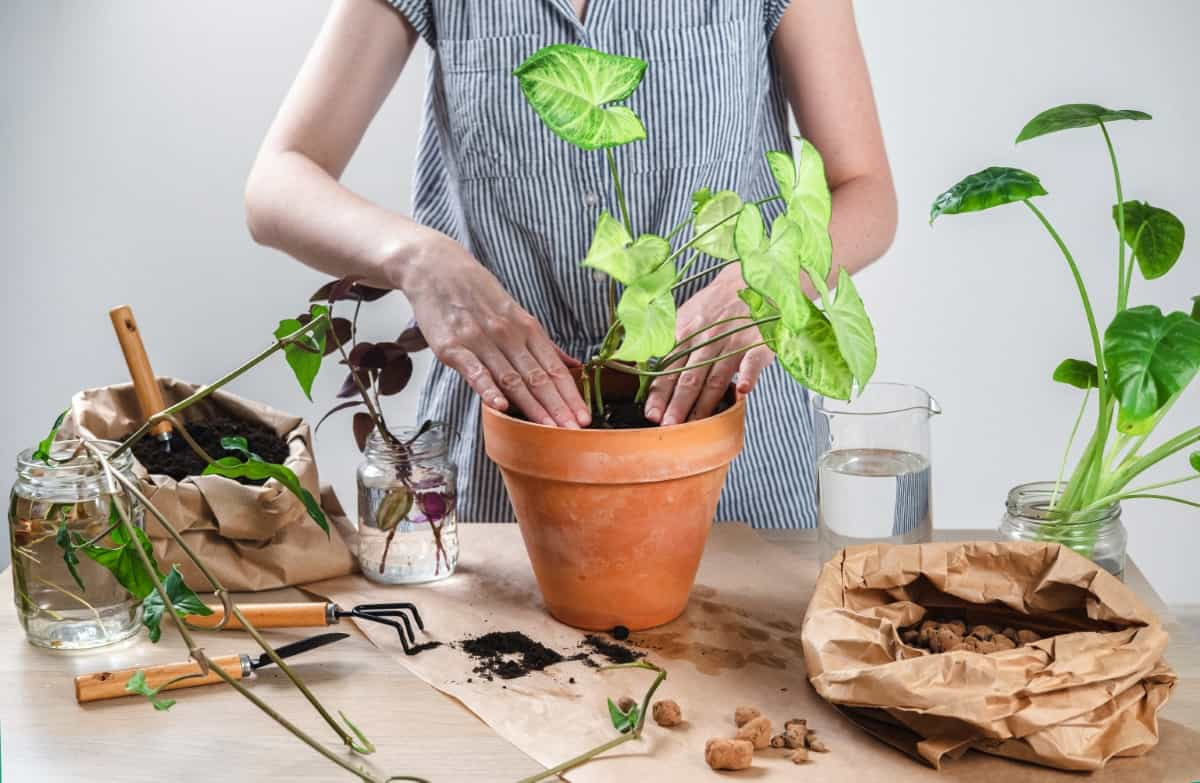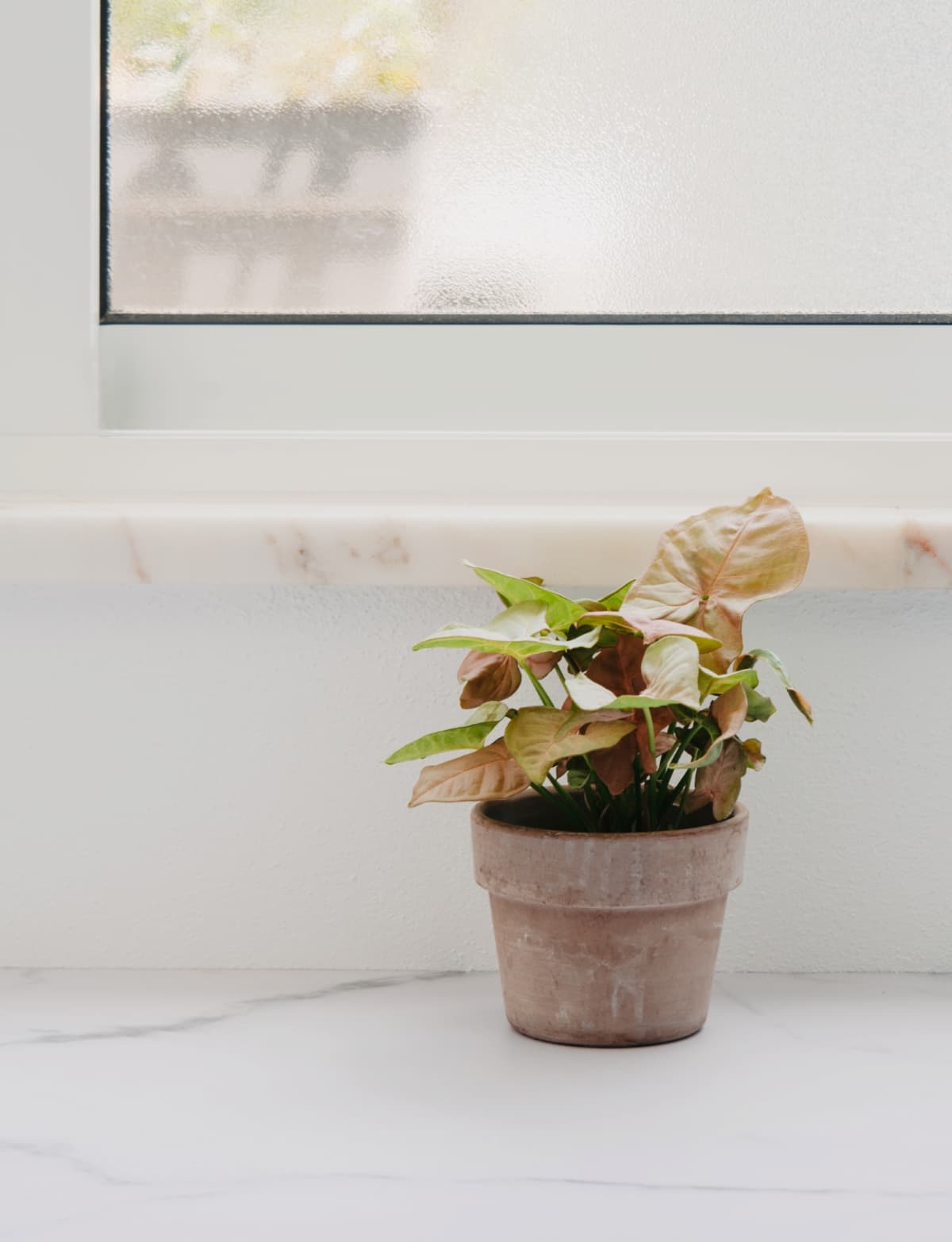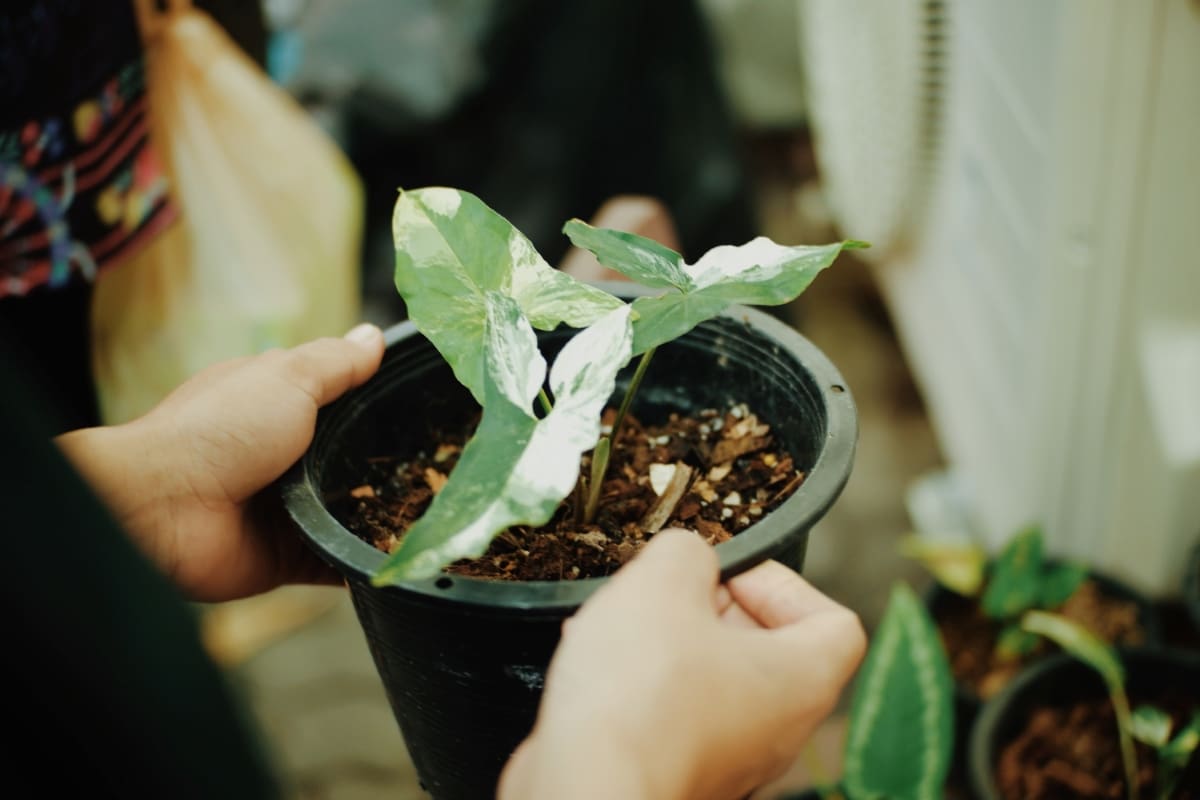The Syngonium Pink Plant, with its vibrant pink leaves, has become a popular choice for indoor plant enthusiasts. Known for its easy propagation and care, this plant adds a touch of color and vitality to any space. Whether you’re interested in the Syngonium pink splash or the Syngonium neon robusta, understanding the essentials of pink Syngonium plant care is key.

This includes knowledge about pink Syngonium propagation, selecting the right pink Syngonium soil mix, and mastering the art of maintaining the perfect environment. Let’s dive into the details of growing and caring for this beautiful plant.
How to Grow Syngonium Pink Plant
Understand the Syngonium Pink Plant
The Syngonium Pink Plant is not just a visual delight but also an adaptable houseplant. It comes in various pink Syngonium varieties, each with unique shades and patterns. Pink syngonium plants are versatile, thriving in both soil and water, which raises the question, can pink Syngonium grow in water? The answer is yes, making it a great choice for hydroponic enthusiasts. Understanding the plant’s nature is the first step in ensuring its healthy growth and longevity, setting the stage for successful cultivation.
Propagation Methods for Syngonium Pink Plants: From Cuttings to Division
Pink Syngonium propagation is a straightforward process that can be done through cuttings or division. For cuttings, select a healthy stem with a few leaves and place it in water or directly into a suitable soil mix. Roots usually develop within a few weeks. Division involves separating a mature plant into smaller sections, each with roots and leaves, and potting them separately. Both methods are effective, allowing you to expand your collection or share with fellow plant enthusiasts.
Select the Right Pot and Soil Mix
Choosing the appropriate pot and pink Syngonium soil mix is crucial for the plant’s health. To prevent water accumulation, the container needs to be equipped with drainage openings. A well-draining soil mix, ideally a blend of potting soil, perlite, and peat, creates the perfect environment for root growth. The soil should retain moisture without being soggy, providing the roots with the right balance of water and air. Ensuring these conditions are met will significantly boost the plant’s overall health and growth.
Proper Watering Techniques for Syngonium Pink Plants
Watering is a critical aspect of pink Syngonium plant care. The plant prefers consistently moist soil but dislikes being waterlogged. The optimal method is to water deeply when the upper inch of soil becomes dry to the touch. During the slower growth period in winter, it’s advisable to decrease the frequency of watering. Excessive watering may result in root rot, while insufficient watering can lead to drooping leaves and a loss of their vibrant hue. Regularly checking the soil moisture will guide you in maintaining the right watering schedule.
In case you missed it: How to Grow Passiflora Caerulea: Guide to Grow Blue Passion Flower

Fertilizer Requirements for Healthy Syngonium Pink Plants
Fertilizing plays a significant role in nurturing a flourishing Syngonium Pink Plant. Throughout the growing season, from spring to summer, provide the plant with a monthly application of a well-balanced, water-soluble fertilizer. This provides essential nutrients, promoting lush, vibrant foliage. In winter, reduce or stop fertilizing as the plant enters a dormant phase. Using the right fertilizer and schedule will encourage robust growth and maintain the plant’s health.
How to Prune and Train Your Syngonium Pink Plant for Optimal Growth
Trimming and guiding are vital for preserving the form and well-being of your Syngonium Pink Plant. Consistent trimming manages its size and promotes denser growth. Eliminate any discolored or impaired leaves and prune extended vines for a neat appearance. Additionally, you can direct the plant’s growth in a desired direction by employing supports such as stakes or trellises. This not only enhances the plant’s appearance but also promotes healthy growth patterns.
Managing Pests and Diseases in Syngonium Pink Plants
Like all houseplants, Syngonium Pink Plants can be susceptible to pests and diseases. Common issues include aphids, spider mites, and fungal infections. Regular inspection of leaves and stems helps in early detection and control of these problems. Use insecticidal soap or neem oil for pest control and ensure good air circulation to prevent fungal growth. Keeping the plant clean and monitoring its health regularly is key to preventing and managing these issues.
In case you missed it: How to Grow Juncao Grass: A Super Feed for Cattle, Goats, Chickens, and Pigs

Create the Ideal Humidity and Temperature Conditions for Syngonium Pink Plants
Syngonium Pink Plants thrive in a humid and warm environment. Ideal temperatures range from 60°F to 85°F (15°C to 29°C). To increase humidity, especially in dry conditions, use a humidifier, place a water tray near the plant, or group it with other plants. Consistent humidity and temperature are essential for maintaining the plant’s vibrant color and healthy growth.
Potting and Repotting Your Syngonium Pink Plant: Tips and Best Practices
Potting and repotting are crucial for fostering the optimal growth and well-being of your Syngonium Pink Plant. Initially, pot the plant in a container that comfortably fits its root ball. As the plant grows, repotting every 1-2 years is necessary to provide adequate space and fresh soil. When repotting, opt for a slightly larger pot and use a fresh soil mix designed for pink synonyms. Gentle handling of the roots during this process is crucial to avoid stress and damage to the plant.
Troubleshoot Common Issues in Growing Syngonium Pink Plants
Growing Syngonium Pink Plants can sometimes come with challenges. Yellowing leaves could indicate over-watering or poor drainage, while brown tips may suggest low humidity or under-watering. Leggy growth often results from insufficient light. Addressing these issues promptly by adjusting watering, humidity, and light can restore the plant’s health. Regular observation and timely interventions are key to successfully troubleshooting common growing issues.
In case you missed it: How to Grow Saffron Hydroponically: Best Practices for Hydroponic Saffron

Conclusion
By understanding its basic needs, from propagation and the right soil mix to proper watering, fertilizing, and creating ideal environmental conditions, you can ensure its vibrant growth and health. Regular pruning, pest management, and timely reporting further enhance the plant’s beauty and vitality. Troubleshooting common issues promptly will keep your Syngonium Pink Plant thriving.
- Feed Your Flock for Less: Top 10 Tips to Save on Chicken Feed
- Ultimate Guide to Ossabaw Island Hog: Breeding, Raising, Diet, and Care
- Hatching Answers: The Top 10 Reasons Your Chickens Aren’t Laying Eggs
- Eggs and Economics: Breaking Down the Cost of Raising Backyard Chickens
- Defend Your Greens: Proven Methods to Keep Iguanas Out of Your Garden
- Ultimate Guide to Cinnamon Queen Chicken: A Comprehensive Guide for Beginners
- Ultimate Guide to California Tan Chicken: Breeding, Raising, Diet, Egg-Production and Care
- Ultimate Guide to Marsh Daisy Chicken: Breeding, Raising, Diet, and Care
- 10 Types of Chicken Farming Businesses You Can Start for Profits